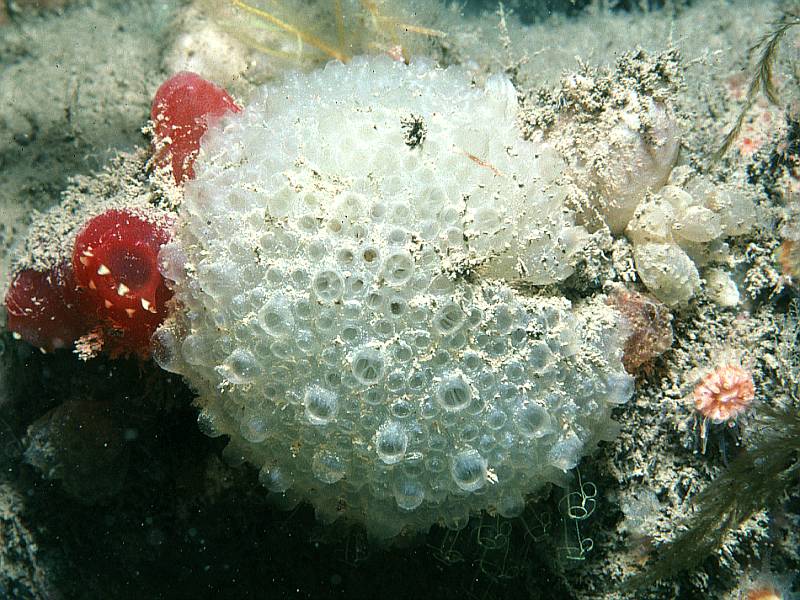| TUNICATA : Aplousobranchia : Polyclinidae | SEA SQUIRTS |
Synoicum pulmonaria (Ellis & Solander, 1786)
Tennis Ball Ascidian
 |
| Synoicum pulmonaria |
Description: The typical form of this species is a large globular mass, with relatively large zooids arranged in star-like systems in its surface. However small colonies with zooids of similar appearance are much commoner, and are at present considered to be the same species. The colonies are brown and semi-transparent, and the zooids lack any distinctive pigmentation. Colony 70mm in diameter.
Habitat: Moderately exposed rocky sites, attached to rock surfaces.
Distribution: The large form has a northerly distribution, being common in the North Sea, and confined to deep cold water in W. Scotland and N. Ireland.
Similar Species: Small colonies are similar to Polyclinum aurantium and can only be reliably distinguished by examination of the internal anatomy.
Key Identification Features:
- Large globular colony, or smaller stalked colony.
- Zooids arranged in regular systems, typically 6-8 inhalant openings surrounding each larger exhalant opening.
- Internal structure consisting of polyclinid-type zooid with smooth stomach arid U-shaped gut.
Distribution Map from NBN: Synoicum pulmonaria at National Biodiversity Network mapping facility, data for UK.
iNaturalist: Synoicum pulmonaria at iNaturalist World Species Observations database.
GBIF data for Synoicum pulmonaria
WoRMS: Synoicum pulmonaria at World Register of Marine Species. Accepted name: Synoicum pulmonaria (Ellis & Solander, 1786). AphiaID: 103692.
Classification: Biota; Animalia; Chordata; Tunicata; Ascidiacea; Aplousobranchia; Polyclinidae; Synoicum
| Previous species | Next species |
| Picton, B.E. & Morrow, C.C. (2024). Synoicum pulmonaria. (Ellis & Solander, 1786). [In] Encyclopedia of Marine Life of Britain and Ireland. https://www2.habitas.org.uk/marbiop-ni/speciesaccounts.php?item=ZD410. Accessed on 2025-04-07 |